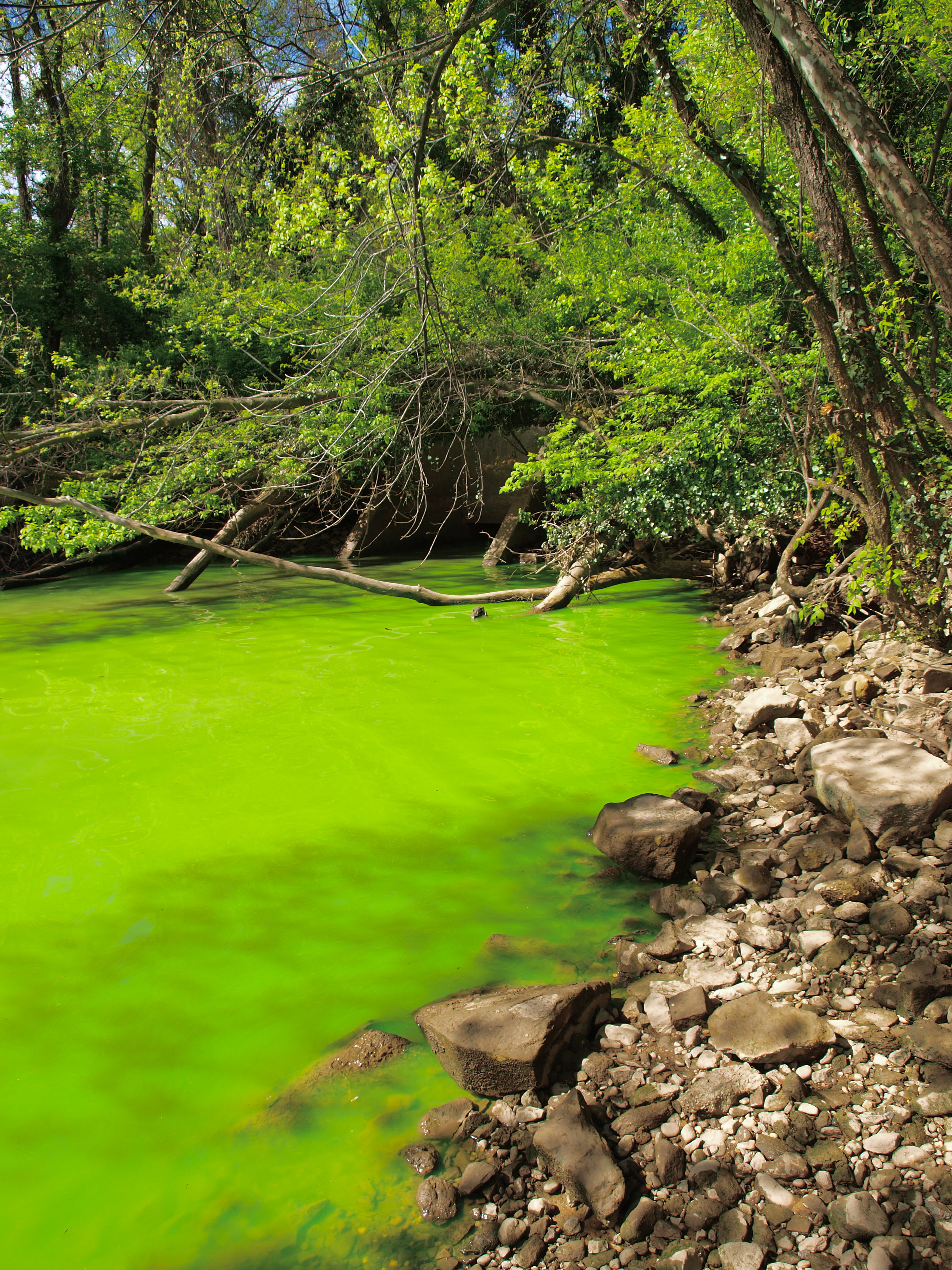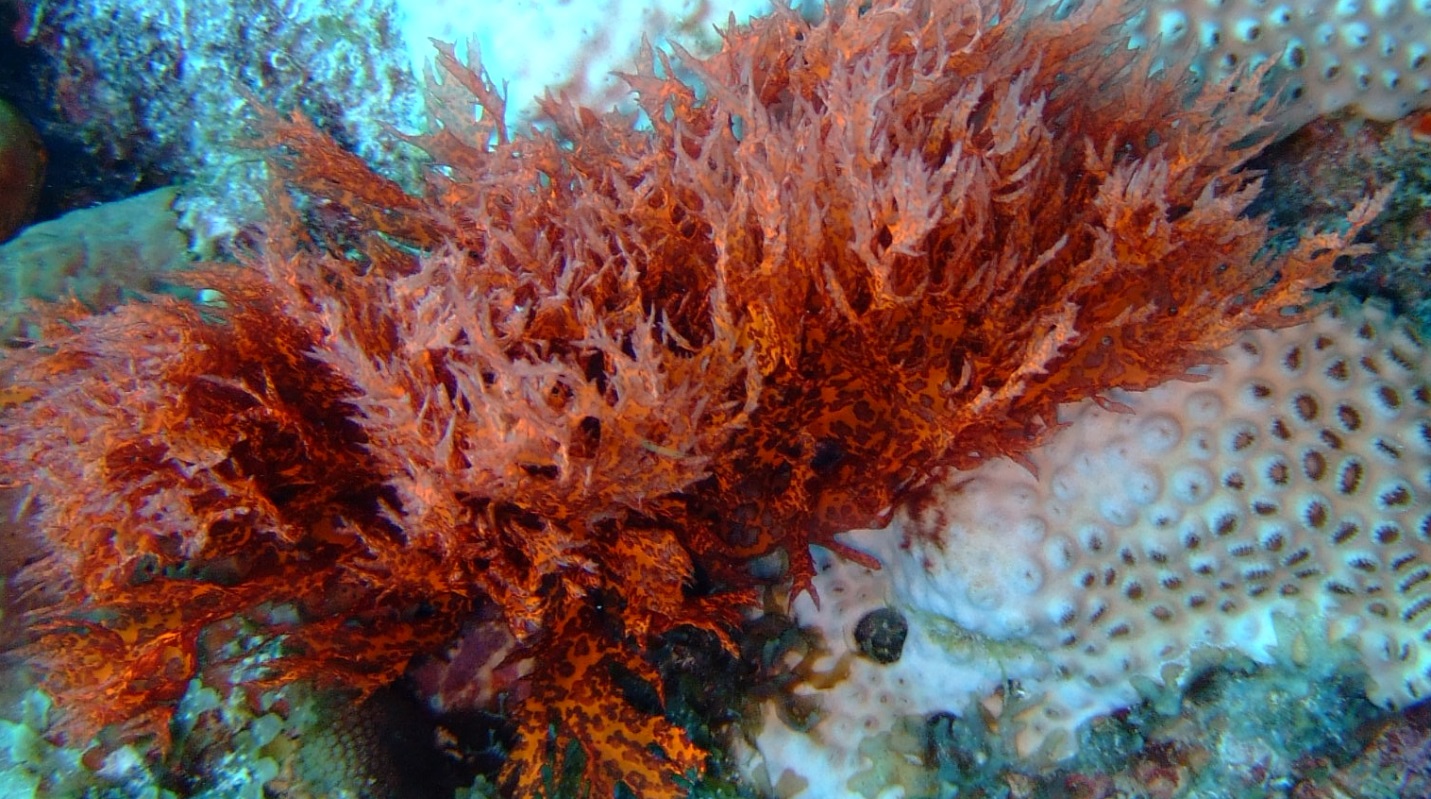Interactions
Navigation Go Back to Life Cycle / Reproduction - Home - Continue to Facts
Jump to Section
Overview
-
Food Acquisition + Digestion
-
Ecological Importance
Food for
Humans? -
Predators
-
Research Value
-
Parasites -
Conclusion
Overview
Aplysia dactylomela is a rather sedentary herbivore. Grazing on algae with its radula, this sea hare also has to withstand a few ambitious predators such as the giant starfish or large green sea anemone. In addition, this organism has some ecological advantages and is helpful in neurological research.
Food Acquisition + Digestion
The Spotted Sea Hare’s preferred food is red algae (EOL n.d.(a)). It has been known to consume red algae along with a number of other species, such as Chondrococcus hornemanni, Ulva reticulate, Laurencia spp., Martensia fragilis, Spyridia fimanetosa,Udotea, Rhinocephalus, Caulerpa, Penicillus, Halimeda, and Acanthophora spicifera (Emore 2002, Miller 1999, Lederhendler 1977). To achieve this task, Aplysia dactylomela uses first its jaws to grasp its meal. Next, its radula rips the food and pull it into the organism’s buccal cavity (mouth). Aiding in digestion is a special crop that is lined with chitinous plates. This structure acts similar in function to a gizzard, helping to break down larger seaweeds and other organisms (EOL n.d(a), Emore 2002).

Image courtesy Dr. Tom Carefoot, Emeritus
Dept. of Zoology at the University of British Columbia
Nudibranches & Relatives @ asnailodyssey.com
Used with permission
Back to Top
Ecological Importance
Since A. dactylomela grazes on algae, it helps to hold back the effects of nutrient enrichment in many economically important bodies of water. This helps to prevent eutrophication, thereby saving these bodies of water for shipping, travel and other recreational activities (Overly n.d).

The effects of eutrophication...
Food for Humans?
Some opisthobranches in Asian countries, such as Japan, are eaten as a delicacy. It is believed, however, that Aplysia dactylomela is too toxic to eat, and may be fatal if eaten in large quantities because of the dye it extracts from its red algae food source (Overly n.d). Another such organism with potentially fatal consequences if eaten is the Japanese puffer fish.
Back to Top
Predators
This organism has only a few known predators: Large green sea anemones (Anthopleura xanthogrammica), giant starfish (Coscinasterias calamaria), other carnivorous opisthobranches such as Aglanja inermisi, some sea turtles, and labrid fishes or wrasses (EOL n.d.(a), Overly n.d.). Mostly, however, A. dactylomela is generally left alone due to its high toxicity (Overly n.d.).

Anthopleura xanthogrammica, large green sea anemone
When under predation, this organism first enacts a quick downward movement of its parapodia over its back to try and get away. Then, it uses its purple dye cavity to ink out a rather irritant substance and releases other foul fluids from its opaline gland (EOL n.d.(a)).
Research Value
Aplysia dactylomela is also valuable for neurological research. Its large ganglion nerve cells, and more specifically its right giant neuron located in its abdominal ganglion, are of interest (EOL n.d.(a)).
Also, recent studies have isolated two interesting tryptophan derived dipeptides, dactylamide A and dactylamide B, present in this organism. Since these metabolites are also reported from the genus Chondria, a red algal food of A. dactylomela, this new data may help scientists better understand how chemicals affect the coloration of animals (Appleton 2001).
Back to Top
Parasites
The Sea Hares in general are the host to a highly specialized endoparasite. Quite common among some species, copepods of the family Splanchnotrophidae latch on to the outside of these organisms (Schrodl et al. 1999).
Conclusion
Moreover, Aplysia dactylomela is an herbivorous animal with a more or less sedentary lifestyle. Although it has to worry about a few predators such as the giant starfish or large green sea anemone and a parasite specie, it is generally left alone to graze on algae species with its radula due to the toxicity of its skin. In addition, A. dactylomela has some ecological importance and is useful for neurological research.

Image courtesy Johnmartindavies, 15 February 2011
Go Back to Life Cycle / Reproduction - Home - Top of Page - Continue to Facts
